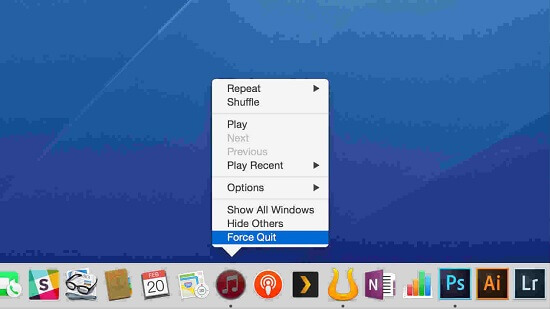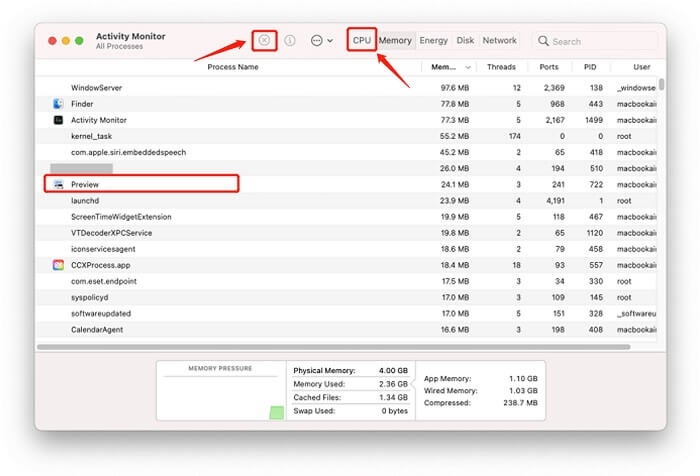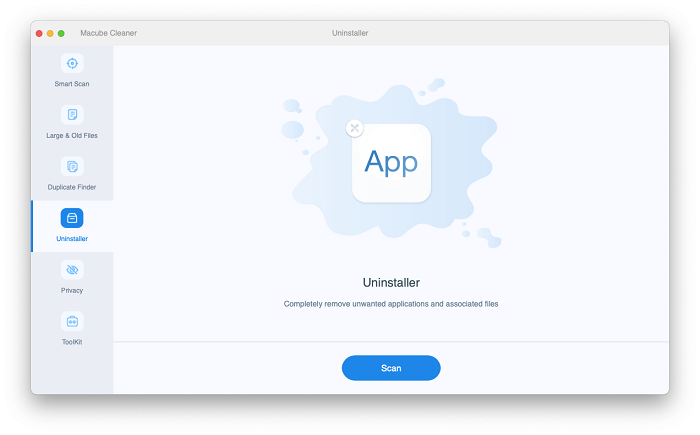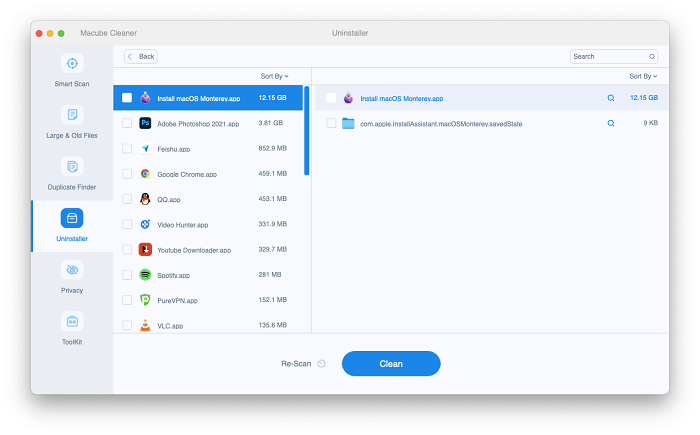Generally, you can force quit an unresponsive app on your Mac using the Force Quit feature in the Force Quit Window. The Force Quit Window is accessible via the shortcut "Command+Option+Escape" or the Apple menu which is especially helpful if "Command+Option+Escape is not working on your Mac. Certainly, you are able to force quit a not-working app by right-clicking it in the Dock and selecting Force Quit. However, Mac force quit may be not working sometimes. What’s worse is that this problem seems to more frequently happen to your commonly used apps, such as Safari, iTunes, Chrome, etc. Worry not, this article is going to show you 4 different ways to fix force quit not working problem on Mac. Try these alternative methods to quit Safari, iTunes, Photos, Mail or other apps that won't force quit again.

How to Fix Force Quit Not Working on Mac
1. Restart Your Mac
To restart your Mac, just Click Apple Menu and select Restart from the drop-down menu. If the unresponsive app leads to a frozen Mac screen, then you can try to force restart your computer. First, press the Power button on your Mac to force the computer to shut down and release the button until your Mac is off. Then, turn on your Mac as usual.
 Note:
Note:- Please don't forget to save your files before powering off your Mac.
2. Use Activity Monitor to Force Quit Apps
You can use Activity Monitor, which allows you to force quit any frozen apps.
Step 1: Locate and open Activity Monitor in Finder > Applications > Utilities.
Step 2: Open the CPU tab and find the app that won't quit in the process list, then select it.
 Note:
Note:
- To find out the frozen app quickly, you can click the Process Name tab on top, and all the processes will be ranked in alphabetical order.
Step 3: Click the X button in the upper-left corner.
Step 4: Click Quit first. If the app still won't quit. Click Force Quit.

3. Quit Apps that Won't Force Quit with Terminal
If force quit in Activity Monitor is still not working, you can force quit the frozen app with a command-line method, which means you can quit an unresponsive app through Terminal. Here are the steps:
Step 1: Open and run the Terminal app at Finder > Applications > Utilities.
Step 2: Type the command: killall [application name]. For instance, if iTunes isn't responding, type killall iTunes.
Step 3: When you are ready, click Enter. As soon as you click it, your application will be shut down in time.
You can also force quit an app on Terminal using the app's Process ID(PID).
Step 1: Open a new Terminal window and enter the command: ps -ax.
Step 2: Then a list of all running applications and processes will appear in Terminal with the app's process ID. Take down the PID of the app that cannot quit (which is a series of numbers at the left of the app).
Step 3: Then open a new Terminal session, type: kill [PID]. For example, if iTunes won't quit and its PID is 1234, type: kill 1234 to force quit.
 Note:
Note:
- The PID of an app will change each time the app is launched.
4. Uninstall Apps That Won't Force Quit
If you can't make a third-party software to close by the above methods, then it is very likely that there is a problem with this software. In this post, it's better to uninstall the apps. You can use Macube Cleaner, an app uninstaller that can locate app files for you and completely remove the app as well as app files and delete its related data in one click. It's important to make sure related data is deleted. If you just delete the app, the wrong file may still be on your Mac.
The Macube app now is available with a 7-day free trial, which offers you all features, so you are free to utilize the Uninstaller feature and get the problematic app removed in one click.
Step 1: Download and launch Macube Cleaner on your MacBook.
Step 2:Navigate to Uninstaller to click "Scan". Then you see all the applications on your Mac.

Step 3: Choose the app that won't force quit and simply click Clean to uninstall the app completely.

Step 4:When everything is done, you can see the interface below, which indicates your apps are removed successfully.

You can now reinstall the app so that the force quit not working problem won't happen again. Just get the free program to get rid of the problem.
How to Prevent Force Quit Not Working on Mac
Here are some powerful tips on reducing the occurrence of "Mac force quit not working", based on the common causes of such an annoying issue.
Tip 1: Avoid running several apps at once. The running app consumes system resources like RAM or CPU. If you open many apps simultaneously, there are insufficient system resources left for each app, leading to unresponsive apps and force quit not working in the end.
Tip 2: Regularly update your software and macOS, since outdated software and system are one of the reasons for unable to force quit apps on Mac.
Tip 3: As what above says, apps occupy RAM, CPU or storage when running. It's suggested to use lightweight apps which more resource-efficient than others.
Tip 4: Periodically restart your Mac after using it for a while. Mac restarting is a quick way to clear temporary files and refresh system processes, effectively freeing up the system resources.
Conclusion
What happens when force quit doesn’t work on your Mac? These 4 different methods you can try:
- Use Activity Monitor to quit the process.
- Restart your Mac
- Enter commands in Terminal to quit apps.
- Uninstall the apps that can’t force quit and reinstall it.
The first 3 solution is helpful to fix the force quit not working problem on your Mac. If the same problem happens frequently, you need to consider utilizing a Mac cleaner like Macube Cleaner to get rid of the app, and then reinstall it to prevent the issue from arising in the long term.
Hot Articles

Macube Cleaner
Speed up and troubleshoot your Mac super easily with a Macube full-featured free trial!
Start Free Trial